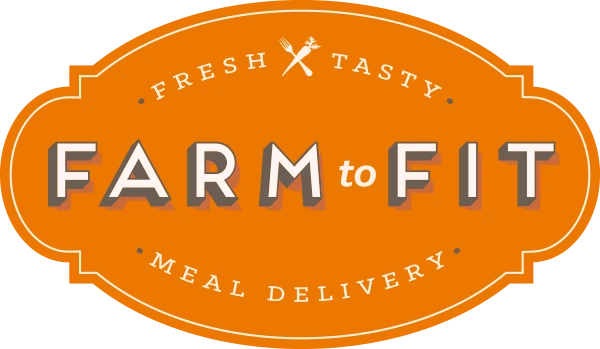7 Intermittent Fasting Types and Their Benefits
Posted on
Why when you eat matters
Fasting has been a staple of human spirituality and health culture for centuries. “Intermittent Fasting” only entered the spotlight as a weight-loss method after a popular BBC documentary in 2012.
You may remember intermittent fasting (IF) from our previous blog about its potential pairing with the Whole30 plan. IF focuses on when we eat, requiring adherents to abstain from eating calories for long enough that insulin levels in the body fall. The body then switches to burning fat for fuel, which accelerates weight loss. IF also has potential to lower risks of diabetes and heart disease by lowering blood sugar and cholesterol.
Just as there are many ways to do a pushup, there are several competing methods of intermittent fasting, each with their own unique advantages and disadvantages. In this week's blog, we're counting down the 7 most popular intermittent fasting types and their benefits, as well as their potential drawbacks.

No matter when you fast, make sure you're eating healthy when you do. Let Farm To Fit take care of the cooking, with balanced meals made from fresh, whole foods. Delivering fit meals in Portland and the surrounding areas since 2011.
The 7 Intermittent Fasting (IF) Types

12/12 — “Circadian rhythm fasting.”
16/8 and 14/10 — “Time-restricted feeding”
What is it?: Also known as the Leangains Protocol, this IF ratio is very popular in weight loss circles. Dieters fast for 14-16 hours (depending on body composition), eating 2-3 meals in the remaining 8-10 hour window.
Benefits: This as well is a great beginner’s IF method, and is often as simple as cutting out snacks after dinner and skipping breakfast. It’s excellent for those who crave structure and routine.
Drawbacks: No late night snacks and no caloric beverages after 8ish can make nights out on the town difficult. This type of IF requires more dedication in the long term than those with longer windows.
5:2 — “Whole-day fasting” or “The twice-a-week method”
What is it?: On one or two non-consecutive days, limit your calorie intake to 400-500 calories in one or two small meals. Make sure that at least 200 of those calories come from protein. This is sometimes referred to as “modified fasting.” During the other five days, eat as you normally would, without restriction.
Benefits: 24-hour fasting or modified fasting seems the most beneficial for shifting the body into ketosis. Limited studies on the 5:2 method have shown that it reduced insulin levels and improved insulin sensitivity.
Drawbacks: A full-day fast is undeniably more difficult to stick with than a part-day fast, and side effects like hunger pangs and nausea may become more severe.
Alternate-day Fasting
What is it? - Dieters fast for 24 hours, then return to a normal eating schedule for 24 hours, then repeat.
Benefits: No restrictions at all on non-fasting days, meaning eat as much as you want whenever you want.
Drawbacks: Because of how much you’re reducing your fuel intake, this type of fasting can make intense workouts draining and less effective. Studies have cast doubt on the long term effectiveness of alternate-day fasting, as it’s so difficult to stick to.
The Warrior Diet
What is it? A diet plan created in 2001 by Ori Hofmekler. The basic structure revolves around eating little to nothing for 20 hours per day, then feasting on unprocessed whole foods at night.
Benefits: Like other IF methods, the warrior diet is linked to increased weight loss, lower levels of inflammation, and improved blood sugar regulation. Like the paleo diet, the warrior diet’s focus on whole, unprocessed foods is excellent for nutrition.
Drawbacks: There’s almost no scientific study on the warrior diet. Support for its claims can be drawn from its similarities to IF and Paleo, but further research is required to determine if it’s more effective than any other IF method.
Eat-stop-eat (The 24-hour fast, weekly 24-hour fast)
What is it - Fast for 24 hours once a week, consuming no calories at all, only water, coffee, or tea. This method was developed by researcher Brad Pilon in his book “Eat Stop Eat.” Only one or two days a week are required, and the other 5-6 dieters can eat as they normally would.
Benefits - This method gets the fast out in one go, shifting the body into ketosis and holding it there for a longer span than shorter fasts.
Drawbacks - Eat-stop-eat may be more difficult than shorter fasts, and challenging to stick to in the long-term. Side effects may be more severe (irritability, fatigue, etc.).
Spontaneous meal skipping
What is it? Instead of sticking to a strict fasting pattern, spontaneous meal skipping is a more relaxed approach to IF. Simply skipping one or two meals a day a couple times per week qualifies as intermittent fasting.
Benefits: This kind of fasting is great for those who may not always have time to cook or are traveling
Drawbacks: No routine means no consistency. While this kind of fasting may be easy, it’s less effective than more regular fasting practices. It can be difficult to track for the same reasons.

Which intermittent fasting type is right for you?
Only you and your preferred healthcare provider can say! Each of the types of IF examined above has its own unique pros and cons, so consider carefully what you need from your next eating strategy.
Keep in mind that IF isn't right for everyone. Those with eating disorders, nutritional deficits, underlying health conditions, or potential pregnancies are not recommended to try intermittent fasting.
Don't forget that when practicing intermittent fasting, the quality of the food you consume becomes even more crucial than normal, as you're taking in less. Make sure to eat plenty of fiber, protein, and other essential nutrients between fasts.
